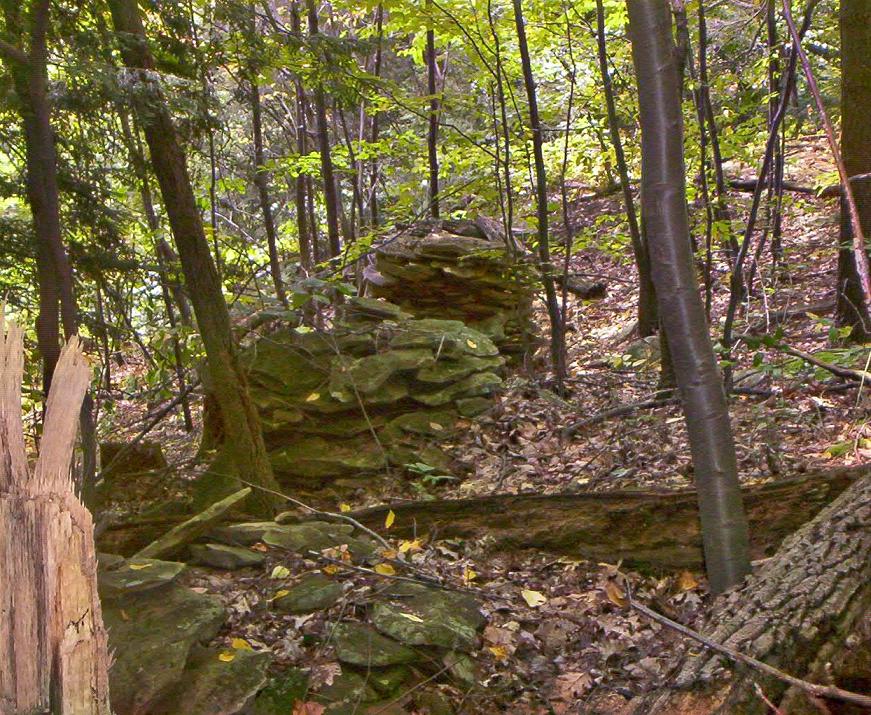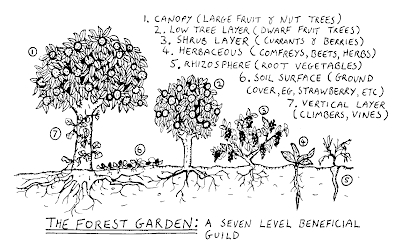 It feels good to know that your garden is not only providing you with food and of course tranquility, but is also a habitat for other wildlife.
It feels good to know that your garden is not only providing you with food and of course tranquility, but is also a habitat for other wildlife.A place to start is by building make-shift houses for native bees, lizards, hedgehogs, birds, spiders and insects to provide shelter and privacy so that they can go about their simplistic, non-materialistic lifestyles in peace.
There are plenty of easy ways to accomplish this task.
You can simply pile stones, rocks and pieces of wood in unused areas of the garden;
thick plantings of hedges, low lying shrubs and tall grasses will all become homes for many different animals.
NZ Jeweled Gecko
To encourage native geckos plant native groundcover shrubs with juicy berries like Coprosma and Muehlenbeckia and nectar-bearing flax and pohutukawa. and as above, provide plenty of places for them to live.
Build a Mason bee house.

to do this you just need to drill 8-10mm holes 100mm deep in a piece of wood. This could be a log or some unused offcuts of timber (un-treated), or you can make something fancy looking.
screw or nail another piece of wood at the top for a roof so that rain and midday sunshine doesn't penetrate inside the holes.
(The same idea can be accomplished by tying together a bunch of bamboo pieces)
Then mount it in a tree, on a fence or make it free standing somewhere in the yard.
Face the hive in an east direction, as the bees are stimulated by the morning Sun.
 or a bug house,
or a bug house,Same idea as above, just put bound up short lengths of bamboo in and around the garden to provide a dark, moist place for bugs to live.
you can build the classic bird house.
My dad built a bird "apartment block" and winched it into the top of a pohutukawa tree in his front yard. It is now home to a bunch of noisy tuis.
Plant native flowering and fruiting plants to attract native birds such as Kowhai, Kakabeak, Harakeke(Flax), Kawakawa, Rewa Rewa, Tanekaha, Cabbage tree, Tawa, Miro, Hinau, Puriri, Nikau, and Supplejack. As well as any other fruit or berry and nectar producing trees and shrubs. I've noticed Wood pigeons love Elderberry.
Wetas will quickly make a home out of any rotting logs with hollows where they can hide.
Tree Weta
All species of native Stick Insect will eat manuka, but only Clitarchus hookeri can be successfully brought through its entire life cycle on a diet of manuka alone. Other species will eat Karamu, Rata, Pohutukawa, Rimu and Totara. With Argosarchus, Myrtus bullata, the Ramarama is the essential food plant. Willows, Cedars, Roses and Common ornamental garden conifers such as junipers are also eaten.
Stick Insect
Another idea is to dig small holes and line them with plastic, fill them with water and place rocks around the edges so that there are parts in the garden with water for animals to drink and other life to live in. You might complain about mosquitoes but i've noticed that fantails love eating them.
Another easy idea is plant flowers to attract insects, Asteraceae and Apiaceae family as mentioned in previous posts are really good, especially Asters, Cosmos, Sunflowers, Daisies and Echinacea from the former and Dill and Fennel from the latter.
Sweet alyssum (Lobularia maritima) to attract hoverflies.
You can buy a Beneficial Insect Blend here From King seeds (New Zealand)
White Alyssum, Buckwheat, Yarrow, Bergamot, Lavender, Clover and Russian Sage are also good.
I have heard that the best way to attract ladybirds to your garden is to leave aphids to live on plants in the garden. The ladybird will only lay its eggs where there is a good supply of food for the larvae.
So resist the urge to kill everything that looks out of place and let nature take it's course.
Common Copper Butterfly
Flowers that will attract butterflys in New Zealand include Hebe (Koromiko), Scabiosa, Cleome, Tweedia, Phlox and Buddelia
Plants that provide food for caterpillars in New Zealand are:
- Asclepias (milkweed) the genus (named after Asclepius, the Greek god of healing) that includes the (common in New Zealand) Swan plant, Giant Swan plant, Common, Tropical and Swamp Milkweed are hosted by monarch butterfly caterpillars. Tweedia can also be used as a food plant.
- Broom, Peas, Sweet Pea, Broad Bean, Gorse, Lupin and Tree Lucerne all feed the Long Tailed Blue Butterfly.
- Natives including low-growing brooms (Carmichaelia spp) & Scree Pea (Montigena novae-zelandiae) and Clover and some other plants from the Fabaceae family will host the Southern Blue Butterfly larvae.
- Most plants from the Muehlenbeckia genus as well as dock and sorrel will feed the Common Copper Butterfly larvae.
- Large-leafed Pohuehue (Muehlenbeckia australis) & M australis & M complexa hybrids are host of the Glade Copper Butterfly.
- Creeping Pohuehue (Muehlenbeckia axillaris) & Maori Dock - Runa (Rumex flexuosus) will attract the Boulder Copper butterfly.
- Creeping Pohuehue (Muehlenbeckia axillaris) & Pohuehue (Muehlenbeckia complexa) will feed the Rauparaha's Copper Butterfly caterpillar.
- Black Mountain Ringlet
- Butler's Ringlet
- Forest Ringlet
- Common Tussock
- Harris's Tussock
- Janita's Tussock
- Urtica genus (stinging nettle) will provide food for red and yellow admiral Butterflys.
- Groundsel/Ragwort will provide for the Cinnibar moth and Magpie moth (Mokarakara)
- Puriri moths are New Zealands largest native moth and live for only one night. Plant Puriri, Putaputaweta and Kanuka.
Magpie moth (Mokarakara)
Red Admiral Butterfly










So luck to come across your excellent blog. Your blog brings me a great deal of fun.. Good luck with the site.
ReplyDeletehave hegn
Mmorpg oyunları
ReplyDeleteınstagram takipci satin al
Tiktok Jeton Hilesi
tiktok jeton hilesi
Sac ekimi antalya
referans kimliği nedir
İnstagram Takipçi Satın Al
METİN PVP
İnstagram Takipci